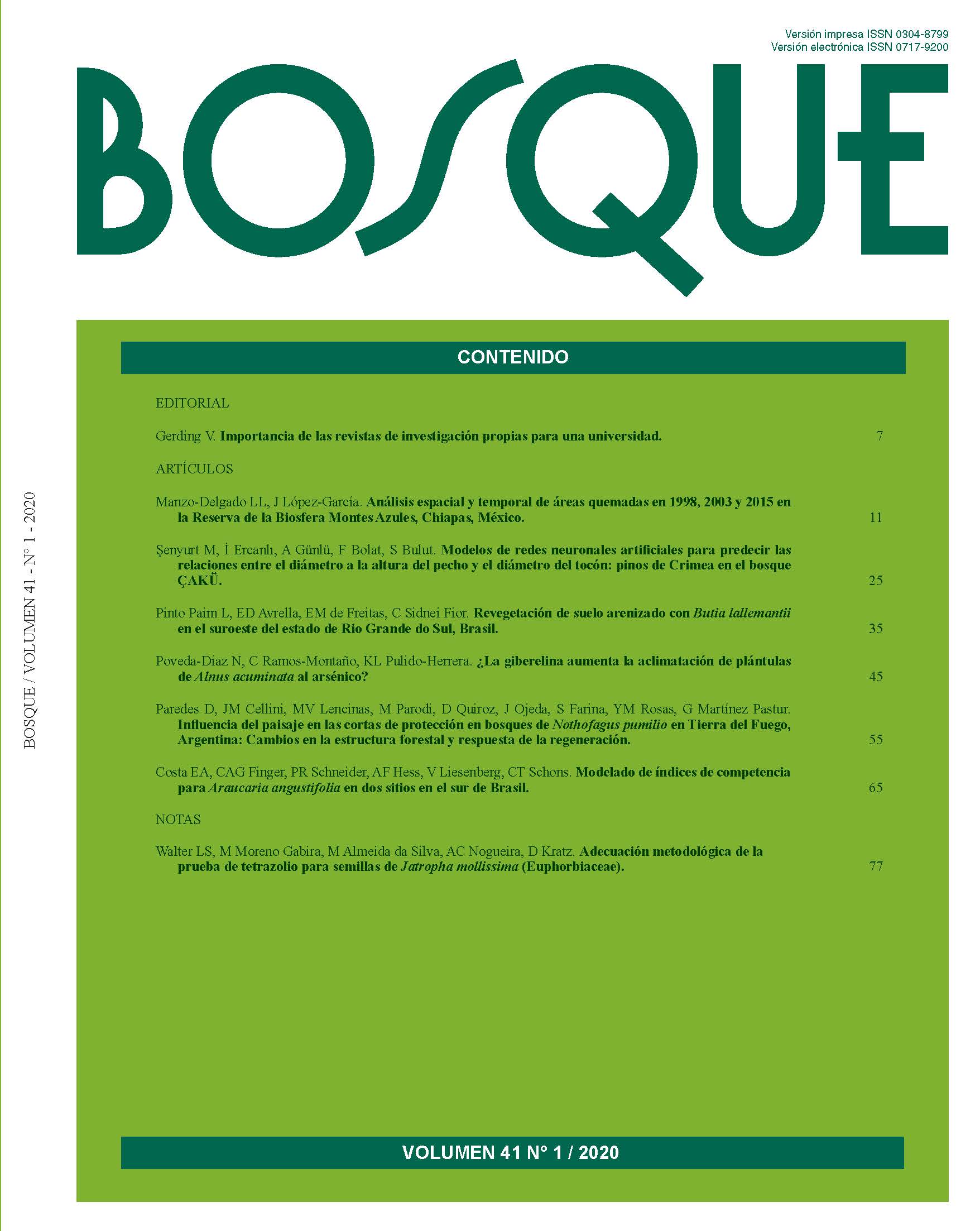Main Article Content
Mar 31, 2020
Abstract
Butia lallemantii is endemic from sandy soils in the state of Rio Grande do Sul (RS). Sandblasted soils stand out for fragile characteristics of low fertility, water availability and intense sand displacement. However, studies on planting techniques, use of fertilizers and alternative products that may favor the establishment of plants in these soils are lacking. Therefore, the objective of the study was to evaluate the survival and leaf appearance of the B. lallemantii plants established by the revegetation method in sandy soil, with the increase of mineral fertilizer and hydroretentor polymer, as well as monitoring the movement of sand particles. The plants were collected in Alegrete / RS, classified in stipe diameter and kept in substrate (soil, animal waste and rice husk, 1:1:1) for eight months. In field plantation, the doses of NPK and hydrogel were randomly placed between five graded rules in the soil, for periodic sand displacement readings. Survival, appearance of live leaves and sand displacement were evaluated monthly, with a randomized block design (100 seedlings/block). Results showed higher survival and presence of living leaves in the plants of block one, and average displacement of sand in the spring period. Therefore, plants of larger stipe diameter class show higher potential for survival and larger number of live leaves, in addition, sand displacement mainly happens during spring.


